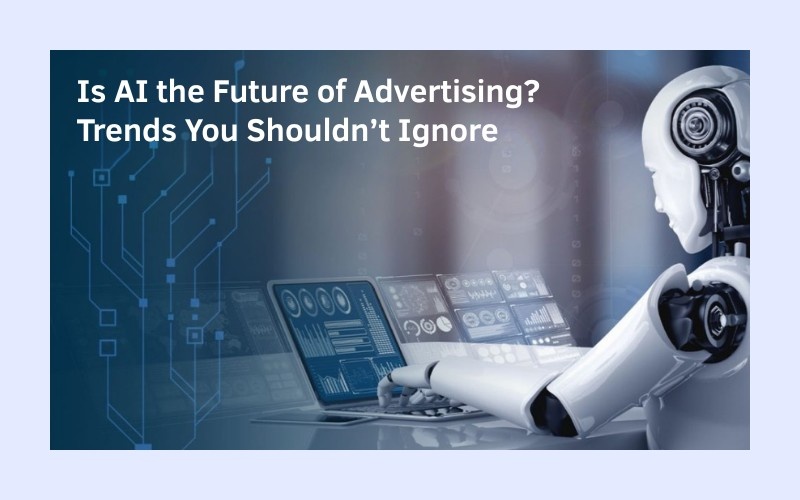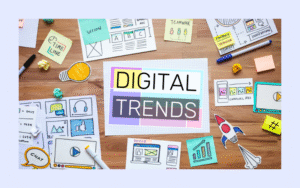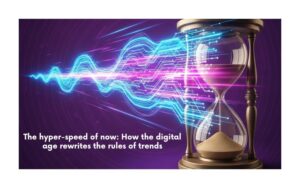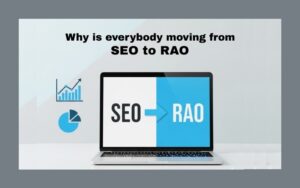Introduction: Advertising Enters a New Era
There is an increasing pace of advertising. As the traditional media techniques flounder to remain relevant and consumers increasingly reject generic, one-size-fits-all messages, the industry has not only resorted to artificial intelligence (AI) technology as a means of change but also as an agent of change. Artificial intelligence is now not merely about automation or data processing, but it is becoming the very core of how advertisement is envisioned, targeted, shaped, tested, and delivered. With the future in mind, the only question remains now not whether AI will define the advertising world, but to what extent and at what pace. Being aware of these changes is not an option for brands and marketers who want to remain relevant. It’s essential.
The Rise of AI in Advertising
The first way that AI was used in advertising was through automation: automation in ad auctions, automated email campaigns, and automated suggestions. However, what used to be a combination of backend efficiencies has become a wide-scale strategic utilization. AI is driving the delivery of hyper-personalized content in terms of what is shown to whom, the predictive audience segmentation, and even the creative process itself.
In 2023, AI programs can help in determining how people act as consumers, and they can provide forms of customized messages based on this action and deliver them at the time that the content will have the most impact. This is not only regarding the saving of time but also augmenting performance. Those marketers who employ AI are enjoying higher engagement and enhancements in returns on investments, and reduced time in optimizing campaigns. The era of advertising is the era of AI, which is highly integrated into each customer journey phase.
Smarter Audience Targeting
Improved audience targeting is one of the most influential changes that AI is making on advertising. The classical demographic segmentation based on age, gender, and income is coming slowly to an end in favor of psychographic and behavioral segmentation via machine learning. Rather than targeting “women aged 2534,” AI can target “users who have evidence of their consumption and engagement with content like this in the past and are likely to emotionally react to family values being told through a story.”
This behavioral modeling would be enabled by AI systems that analyze huge amounts of data: browsing data, purchase data, device usage data, time of use data, and even location data. These are insights that can be used to reach micro-segments with messages that appear to be personal, relevant, and time-sensitive from brands. These models make sure that less ad spend goes to waste and conversion rates are also boosted, which were eventually the aims of the advertising itself all the time.
Another significant figure in this change is programmatic advertising, where the ads are bought and placed automatically in real-time according to data on the user. Such platforms as Google Ads or the ad network of Meta use AI to bid on ad placements and creative mixtures in order to optimize, depending on performance-based signals collected within milliseconds. The more these systems learn, the more they become better at learning, and in turn become more effective and better at it without the need for a human.
AI-Generated Content and Creative
What was previously believed to be sacrosanct to AI, creativity, is currently going through a period of innovation. Artificial intelligence is being applied more and more to create ads and advertisement content through copywriting, photography, even the entire concept and content of the advert: videos. Places such as Jasper, Magic Write at Canva, and Adobe Firefly enable one to generate marketing content with minimal human contribution, yet maintain its quality.
The NLP systems are used to write ad headlines, descriptions of products, and captions in social media, setting them to a certain audience and tone. Visual tools are capable of creating an infinite number of banners, thumbnails, and email heads that maximize the potential performance of these elements through clicks alone. In video, AI can edit video, insert voiceover, and tailor messages to the data of the viewer, all at a scale.
AI is enhancing the work of these creative professionals who continue to play a pivotal role in establishing the tone, strategy, and brand voice. It is capable of producing the initial draft, trying several versions at a time, as well as analyzing the outputs to perfect the results in the future. This way, the creative process also becomes quicker, data-oriented, and more iterative, which is essential in a digital ecosystem that requires perpetual content.
Hyper-Personalized Advertising Experiences
With AI, hyper-personalization is also being facilitated, and the fact is that this has gone way beyond simply adding the name of the consumer to an email. The current AIcano creates hyper-relevant ad experiences that include a user’s action, desires, and context. This implies that one would see various headlines, images, offers, or calls to action, one user at a time, even in the same campaign.
Take a travel company as an example: the company can offer ads for various destinations depending on the previous history of search, current weather in a certain place, or even time of day. The viewer in New York late at night might have a deal called “Last-Minute Weekend Deals to Miami”, but a user in Seattle in the morning would see the deal of the day called “Family-Friendly Trips to Hawaii”. Both ads can belong to the same campaign, yet each one feels very relevant.
AI-based personalization results in increased performance indicators and user experiences. Individuals will be more willing to interact with advertisements when they address what they want or how they may feel, and AI is getting more advanced in utilizing such cues. This scale of personalization is changing the nature of the ad itself; it is shifting our thinking on what an advertisement is; it is changing it into something dynamic and conversational as opposed to being a one-way statement.
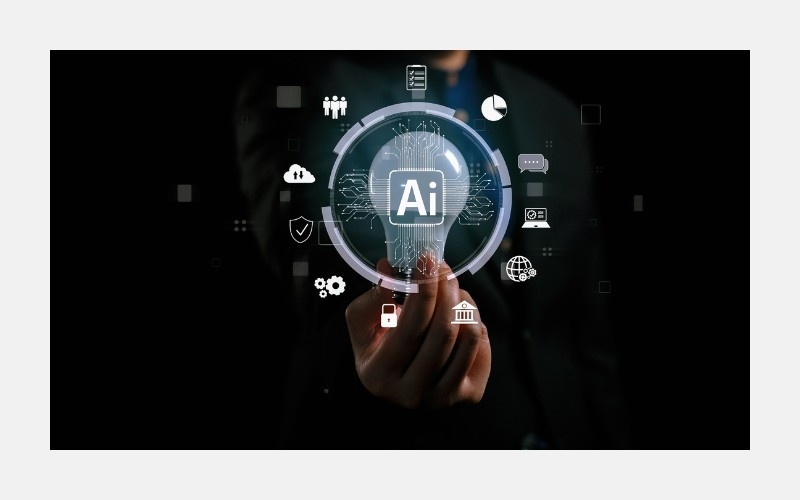
Predictive Analytics and Campaign Optimization
The second main advantage of AI in advertising is that of predictive analytics. Advertisers can predict which customers are going to convert, which channels will bring the largest ROI, and which creative synergies will be the best before they even start their campaign using machine learning models.
After going live, AI tracks performance and changes tactics in real time. This may involve re-assigning budget to the best-performing advertisements or replacing poor-performing creatives, or turning their attention to more-converting groups. These constant proficiencies are occurring quicker and correctly than any human group can deal with in a manual way.
It can also be said that the predictive models may be used to predict the churning, indicate customer dissatisfaction, or identify potential brand advocates. Marketers will now be able to respond to data before it happens and increase customer satisfaction and marketing efficiency simultaneously.
Voice, Visual, and Conversational Advertising
With users moving to voice search, video content, and chat-based interfaces, AI is also helping to innovate in the method of delivery of ads. Audio ad formats with voice-based assistants such as Alexa and Google Assistant are establishing alternatives to the visual ad format. The use of AI will assist the brands to create voice-friendly advertisement experiences, including interactive product demonstrations or verbal product deals.
In the video, AI is being used to study viewing behaviour and advise us on the ideal video duration, emotion, and style of messaging. Distribution on TikTok, YouTube, and Instagram Reels heavily depends on algorithms, and now the brands are preparing the content to appeal to both viewers and artificial intelligence feed rationale.
Voice bots and chatbots, together with what is known as conversational AI, are already being deployed to provide individual, real-time ad experiences. The systems can lead users through a decision-making process, provide personalized product recommendations, or answer questions, which makes it hard to distinguish the realms of advertisement and customer service. Since conversational commerce is on the rise, these tools will become more centralized in terms of brand-buyer interactions.
Conclusion: The Intelligent Future of Advertising
There is no denying the fact that AI is going to define the future of advertising. It is causing campaigns to be more focused, more imaginative, more receptive, and more productive. With intelligent audience segmentation to real-time optimization and AI creation of creatives, the advertising world is smarter than ever before and competitive.
Yet, the strength of AI does not consist in substituting human imagination or instinct. It is increasing it. Those marketers who can adopt AI as something that improves their operations and not as a crutch would feel better prepared to keep up with the modern consumer expectations. With advertising getting more conversational, immersive, and personalized, AI will be the engine that makes that happen–stealthily, in the background, yet mightily.
As advertising goes into the future, brands will need not only to spend on the newest AI technologies but also on ethical marketing approaches, varied data, and empathetic forms of marketing. The future is not only about cooler advertising. It is about the adverts that are connected, that resonate, and that develop. Much is possible with A; this is just the beginning.

